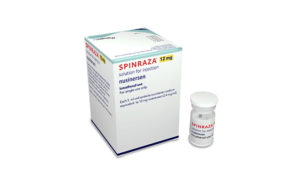
Nusinersen (Biogen) has previously been shown to be effective in the treatment of spinal muscular atrophy in infants under seven months of age; recent research published in Neurology, the medical journal of the American Academy of Neurology, suggests that the drug may also be effective for muscle control even when treatment is started in children older than seven months.
“This study is exciting because we found participants had motor function improvement six months after receiving treatment, even an eight-year-old participant,” says study author Laurent Servais, of Pitié-Salpêtrière Hospital in Paris, France and Citadelle Hospital in Liège, Belgium. “The overall response was to the same extent as that in the previously studied younger population.”
Spinal muscular atrophy (SMA) is a leading genetic cause of death in infant children worldwide. It is a neurodegenerative disease that attacks nerve cells in the spinal cord, leading to muscle weakness. This can affect breathing, swallowing, walking and head control.
There are several different types of SMA; some of them fatal. SMA type 1 is the most common and most severe form of the disease. It starts before the age of six months, with infants never gaining the ability to sit up. The median survival rate is eight to 14 months old.
For the study, 33 children between the ages of eight months and nine years old with SMA type 1 were given an injection of nusinersen into the spinal canal. The drug, which was approved by the US Food and Drug Administration (FDA) in December 2016, is the first and only approved treatment for all types of SMA. It works by increasing the production of a certain protein that is essential for motor neurons in the spinal cord to survive.
Participants were evaluated before the injection, as well as at two and six months after the treatment. Researchers collected data about survival, breathing, need for help with feeding and participants’ ability to move.
Six months after the injection, all 33 participants were alive and continuing treatment. There were no safety concerns. The response to the drug was highly variable from person to person, but on average the participants had significant muscle control improvements—even the eight-year-old participant.
In one test that measured muscle control, with scores that ranged between zero and 26, the median improvement among study participants was 1.5 points after six months of treatment. Five of the study’s participants, ranging from 18 months to four years old when they received their first injection, were able to sit up without support for the first time.
None of the participants had changes in whether they needed a feeding tube, but some did have worsening respiratory problems. Researchers say this may suggest that nusinersen is slower to act on respiratory symptoms and related infections that might destabilize weak patients.
The results of the study were comparable to previous studies that looked only at infants younger than seven months old.
“Spinal muscular atrophy type 1 is a devastating disease, and it is encouraging to see that nusinersen may also help people who are at a later stage in the disease process,” says Servais. “More studies need to be done as it is likely that there are still unidentified genetic factors that contribute to the differences in participants’ responses to the treatment.”
A limitation of the study identified by the investigators is that the majority of the participants were under four and a half years old, so the results cannot be applied to older patients.













